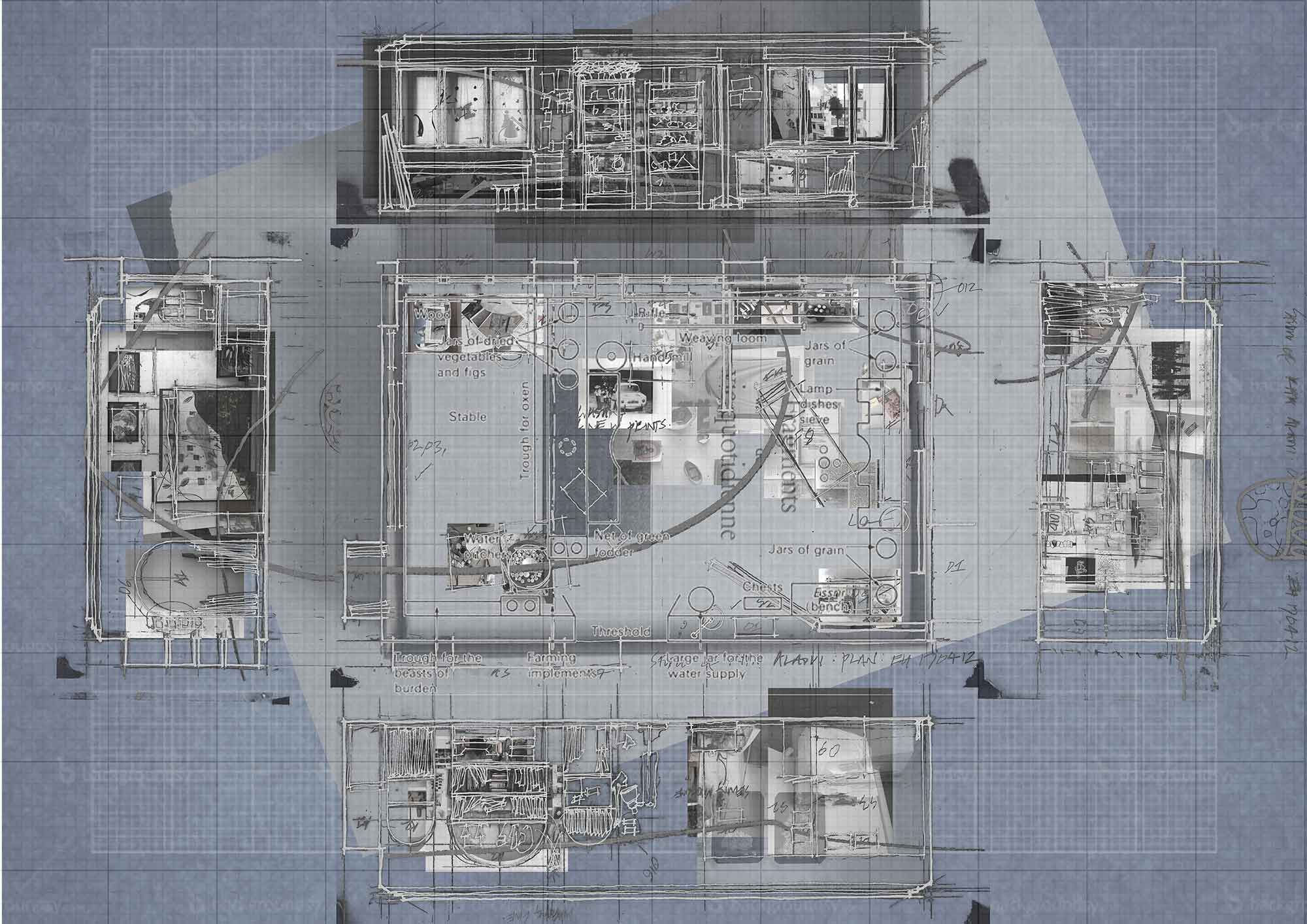
“… who, in ordinary life ever observes with such minute accuracy the decoration of a room? Who doesn’t limit himself to embracing the whole with a general glance, deriving vague and sometimes quite illusory impressions from it” (Praz, 1964) p.42.
Mario Praz (tr. Weaver, William) An Illustrated History of Interior Decoration from Pompeii to Art Nouveau (Thames and Hudson, 1964) p. 42.
This project represents what remains of a collaborative process.
In 2017 the artist Rita Alaoui and the writer Edward Hollis took up residence in one another’s very different worlds. Hollis travelled to the artist’s studio in Casablanca, and Alaoui to the University of Edinburgh; and in those cities, north and south, they sought to investigate, and to record, the traces – what remains – of the lives that are lived there
Hollis spent time in Alaoui’s studio mapping the objects, precious and profane, that Alaoui collects as the germ of her practice. Working together, writer and the artist used them to trigger recollections and reflections on the nature of her own practice of making and collecting.
This process has been synthesized into a visual a map of the artist’s studio as a portrait, in things, of the artist herself. It is accompanied by a series of short stories about clues and traces that Hollis encountered in the studio – what remains – of Alaoui’s creative process.
This project was developed and promoted by Arts Cabinet with the generous funding from: The University of Edinburgh/ECA Arts Cabinet
For more information please check: https://www.artscabinet.org/art-and-research/minefields?rq=minefields
Edward Hollis studied Architecture at Cambridge and Edinburgh Universities; and practiced as an architect, first in Sri Lanka, and then in the practice of Richard Murphy, well known for his radical alterations to ancient and historic buildings in and around Edinburgh. In 1999, Edward Hollis began lecturing in Interior Architecture at Napier University, Edinburgh. In 2004, he moved to Edinburgh College of Art, where until 2012, he ran undergraduate and postgraduate programmes in Interior Design. Working with follies and ruins in Sri Lanka, with modern interventions to historic buildings in Scotland, and in the slippery discipline of Interiors, has focussed Hollis’ research and theoretical thinking on building stories and narrative structures connecting time, folk tale, and the built environment. Edward Hollis’s first book, The Secret Lives of Buildings, a collection of folk tales stories about mythical buildings was published in 2009; and his second, The Memory Palace, a book of lost Interiors’ was published in 2013. His third book, How to Make a Home was published for the School of Life in 2016.
Rita Alaoui lives and works between Morocco and Paris. Graduate of The Parsons School of Design, New York, she uses painting, as well as sculpture, drawing, photography, installation, and video-performance, establishing creative links between art and writing, as she published the first ‘Livre Objet’ “Fragments de vie Quotidienne” in the Arab world (éd.Al Manar Paris and supported by the Prince Claus Fund for Culture and Development.).
Since 1999, Rita Alaoui’s work has been regularly shown at international exhibitions and in Morocco, such as Galerie Delacroix (Tangiers 2016), Galerie Venise Cadre (Casablanca 2012, 2015), Galerie Shart (Casablanca 2007, 2010), Dakar Biennale (2018), La Colonie (Paris 2017), Tiwani Contemporary (London 2017), l’Institut du Monde Arabe (Paris & Tourcoing 2014, 2018), Le Musee d’Art Contemporain (Rabat 2014), Art Dubai (2016), Do It in Arabic (Sharjah 2016), Galerie Boa (Paris, 2019).
Currently Alaoui is on a production and research residency at the Cité des Arts (Paris 2019).
Ed Hollis writes stories about buildings and interiors. There are two rules: the stories must read as if they were fiction; but the author must not, in fact, make anything up. The functioning of these stories is contained in their form, which is carefully designed act as the verbal analogue of the spaces they purport to describe: the stories of historic buildings which are passed from generation to generation are expressed as folk tales, similarly transmitted; those of interiors, such as the one presented here, as fleeting assemblages of little vignettes. The ultimate purpose of these little works is to do what drawings cannot: to set spaces into time, driving, and driven by human actions, and the traces it anticipates and forms around them.
Henry James Portrait of a Lady
Read one way, a proto-feminist tragedy. Read another, an acutely observed suite of vignettes about bodies, precisely positioned in spaces, that tell their tale without anyone having to say a word.
Jorge Luis Borges Labyrinths
A wonderful pastiche of scholarly writing that points up the absurdity of its model. Or just a book of compelling stories about spaces and how we know them.
Mario Praz, An illustrated History of Interior Decoration
A camp classic, and the best philosophical writing about cushions and curtains there is.






































































